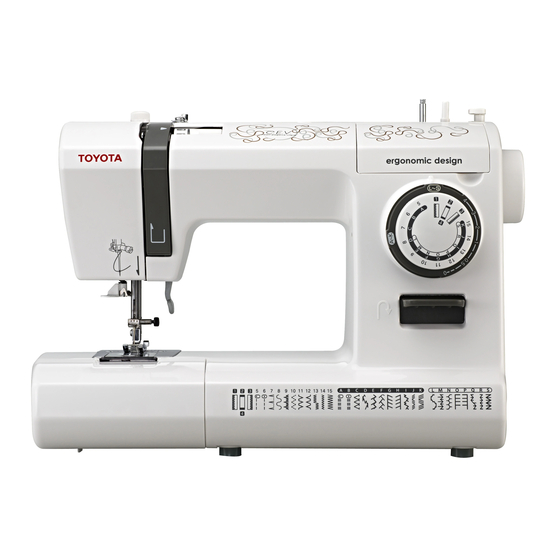
Toyota SP100 Series Instruction Manual
Home-use sewing machine
Hide thumbs
Also See for SP100 Series:
- Instruction manual (54 pages) ,
- Quick instructions (16 pages) ,
- Instruction manual (51 pages)
Table of Contents
Advertisement
HOME-USE SEWING MACHINE
MÁQUINA DE COSER DE USO DOMÉSTICO
INSTRUCTION
INSTRUCCIONES
• Read this manual carefully before use and always follow the
EN
instructions.
• Keep the manual in a convenient place for easy reference.
P2 ~
• If you give the sewing machine to someone else, also give
them this instruction manual.
• Lea este manual detenidamente antes de utilizarla y siga
ES
siempre las instrucciones.
• Guarde el manual en un lugar conveniente para poder
P60 ~
consultarlo.
• Si le da la máquina de coser a otra persona, no olvide
entregarle también este manual de instrucciones.
MANUAL
MANUAL DE
SP100 Series
Serie SP100
Advertisement
Table of Contents
















Need help?
Do you have a question about the SP100 Series and is the answer not in the manual?
Questions and answers